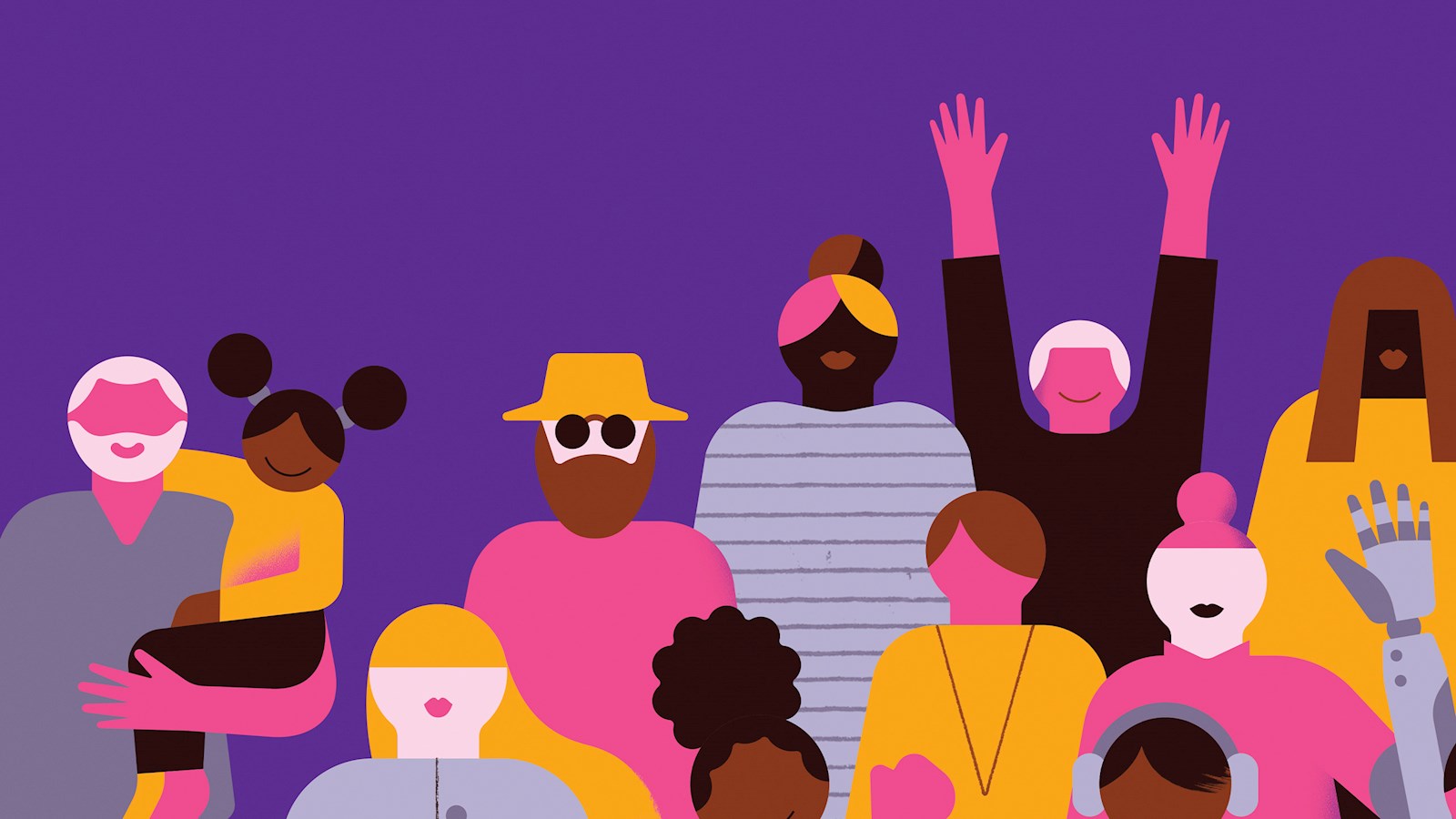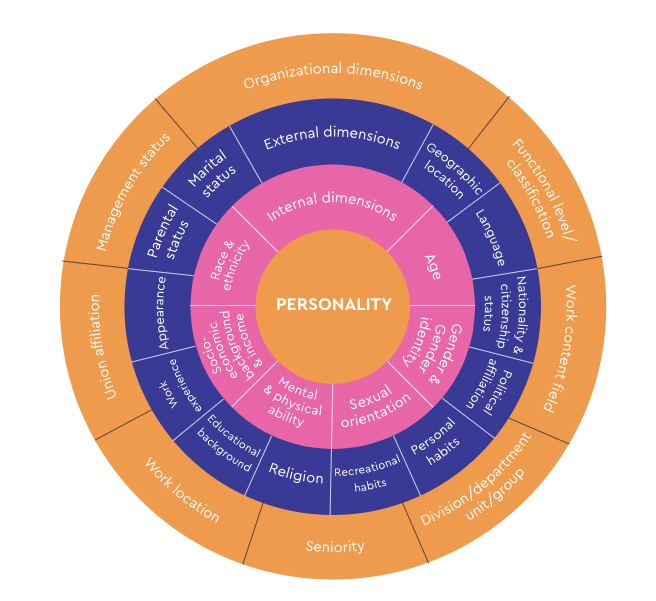
Inclusion’s next wave
Being inclusive helps to shape better brands and businesses and, more importantly, results in a better world – and a better future – for everyone. By Marie Stafford and Sarah Tilley
A grassroots push from historically marginalised communities is aligning with rising employee activism and consumer expectations around inclusion. It means that meaningful action on inclusion is the new imperative for brands and businesses.
In a global survey for Wunderman Thompson, 90% of respondents said that equality is now everyone’s business, and 75% said companies and brands must play a role in solving big societal challenges such as inequality and social injustice.
The COVID-19 pandemic was a pivotal moment. Significantly, it exposed and intensified existing inequalities. People with disabilities and immunocompromised individuals suffered a triple impact: susceptibility to the disease itself, plus severely reduced access to healthcare, and fewer social opportunities due to shielding. The Black Lives Matter movement ignited a global wave of protest, followed by a wave of pledges from businesses to tackle longstanding inequity.
Communities that have endured discrimination have long called for their voices to be heard. Now, the global conversation on inclusion is gaining momentum. Younger generations, taking up the charge from their forebears, have higher expectations for social justice and equity. There is now a cohort who won’t work for businesses that don’t prioritise DE&I. The world over, populations are becoming more diverse, not less. And there’s a global audience of millions ready to cocreate the future of inclusive design, experiences and marketing.
As culture-shapers, brands have a powerful role to play in building a truly inclusive world and reaping the rewards of doing so. Businesses can leverage their influence to break down barriers and drive equitable opportunity.
What’s driving this?
The COVID-19 lens – The pandemic both highlighted and exacerbated existing economic and health inequalities for many marginalised communities. It created space for global protest, including the surge in Black Lives Matter action (the world’s biggest social justice movement), Stop Asian Hate rallies, and protests from disability rights advocates. Pandemic lockdowns proved the benefits of a more flexible workplace, but increased the childcare burden for many, especially women.
Technology – The pandemic’s pivot to digital has unlocked accessible experiences and democratised remote access to work and play. For example, social media continues to amplify the visibility of oppression, while also providing a route to community-building and a means of protest. Automation is changing the shape of the global economy, eliminating many blue-collar roles, while artificial intelligence threatens to encode bias into decision-making algorithms.
Great expectations – People now expect brands to do more than just make a profit. Today, 78% say it’s good when brands step up to support marginalised communities; and 60% say brands that do not deliver on inclusion will become irrelevant.
Employee power – The year 2022 has already seen outbreaks of strikes and a drive for unionisation of workforces around the world. Employees – especially younger ones – are demanding that companies respect social justice. On top of this, the pandemic has triggered widespread calls for remote and flexible working to be a standard benefit available to all.
Political power struggles – Authoritarian governments around the world are pushing back on advances in inequality and clamping down on freedoms, using practices that include voter suppression and restrictions on abortion rights. This is mobilising more protest: pro-choice rallies are multiplying in the US and across Latin America, from Colombia to Argentina.
Inclusion starts with identity
Identity is how we represent ourselves, personally or professionally. It encompasses multiple dimensions, as this graphic shows. The internal dimensions of age, race and gender, are often most central to personal identity and our current life experience. But there are also external, and even organisational dimensions, that come into play. All of these can play a role in how an individual experiences discrimination, whether positive or negative.
Josh Loebner, Global Head of Inclusive Design at Wunderman Thompson, explains: “Self-identification and how we identify ourselves is nuanced. Openly disclosing one’s identity may be precarious, leading some to hide their identity and code-switch, or adjust behaviours, appearances and language, among other traits, to avoid perceived negative consequences.”
Identity is also fluid. People may move into, and out of, communities depending on how they choose to self-identify. People are more comfortable with the idea of fluid identities today. In our survey, 67% agreed that gender identity can change over time, and many of the identity dimensions we explore are mutable.
Most importantly, we know that people do not fit neatly into categories. Identities are, of course, intersectional, overlapping in multiple ways.

Intersectionality matters
Could someone describe you in just one word? Identity is much more nuanced than that. As Rhonda Hadi, Associate Professor of Marketing at the University of Oxford’s Saïd Business School, explains: “We should be thinking about people in a much richer, three-dimensional way, acknowledging that people rarely fit into neat categories.”
The concept of intersectionality was originally coined by the civil rights advocate and critical race theory scholar Kimberlé Crenshaw, and it provides a lens through which to view the many ways in which oppression or privilege can converge and be amplified.
Jenny Davis, Senior Lecturer in Sociology at the Australian National University, advises that: “when we’re thinking about intersectionality, it’s critical to understand how identities combine into something greater than the sum of their parts. Creating equitable and inclusive spaces means accounting for the ways social position can organise both opportunity structures and the lived experiences of everyday life.”
The complexities of conducting research across multiple markets and identities mean that the dimensions of marginalisation on which we can report are simplified in this research. We analysed our survey data according to six dimensions of identity: gender, race, age, sexuality, disability and income. But the true, lived experience of individuals is, of course, more intricate.
Insight from numbers
The analysis of the consumer data upon which this report is based – collected by Wunderman Thompson Data from 5,001 adults aged 18+ in Brazil, China, Japan, the UK and the US in March and April 2022 – revealed the following insights:
- Inclusion looks different around the world.
- Consumers are demanding that businesses and their leaders step up.
- People want meaningful action and tangible impact.
- Inclusive brands have universal appeal.
- Consumers will reward brands that deliver on inclusion.
- Trends from the data
The data revealed the following positive trends on inclusivity:
Intersectional storytelling – Diversity goes beyond the screen as the focus shifts to change behind the scenes too. After all, stories matter, along with who gets to tell them. They shape our reality and perceptions, influencing how we see ourselves, and how we see others.
Amplifying diverse creators – Brands are upping their collaborations with marginalised creative talents, bringing them in as creators, artists and influencers.
Inclusivepreneurs – Entrepreneurs from underserved communities are innovating for themselves.
Democratising desire – Traditional beauty standards are being upended. Brands are empowering all individuals to feel beautiful and desirable.
Revolutionary rest – A host of community influencers are advocating a slower approach to life.
Digital sanctuaries – Digital safe spaces that foster connection and self-expression are welcoming a wider array of communities.
Access all areas – Businesses are creating environments that meet the requirements of users with a broad spectrum of needs and abilities.
Mass inclusive design – Accessible products and services are hitting the mainstream as brands target mass distribution.
Elevated workplace belonging – Companies are moving from pledges to real action, to make all employees feel they belong.
Unbiasing data – Brands and technology companies are taking steps to address, correct and prevent data bias.
Meta-inclusion – The metaverse is primed for ultra-connective engagement, but can brands ensure virtual utopias that are inclusive, diverse and accessible to all?
The wokelash – Across the world, a backlash is building in response to gains by marginalised groups. For brands, taking a political stance will not be plain sailing.
Why inclusion matters
Diverse, equitable, accessible and inclusive businesses deliver multiple advantages, but those who dwell solely on the financial benefits are missing a trick.
Most importantly, inclusivity is the right thing to do. As Ant Jackson, Creative Head at Space, explains: “We shouldn’t implement true inclusion because it’s better for business, we should implement true inclusion because it’s better for everyone.”
Inclusive design is simply good design. History shows that inclusive design can bring universal benefits and unlock more opportunity. Devices and technologies originally created for people who need adjustments often make life easier for all of us. People feel closer to brands that are inclusive. In fact, it’s becoming an expectation: 60% (and 71% of Gen Z) say brands that do not deliver on inclusion will become irrelevant. And it’s about business resilience too. Environmental, social and governance credentials are increasingly important in investment analysis, and the way companies treat their people is under scrutiny.
Inclusion fights negative groupthink and drives innovation. When teams are not diverse, things get overlooked. Things go badly wrong. Research finds that inclusive businesses drive more innovation by giving everyone a seat at the table. And, in the fierce competition for talent, inclusion is an imperative. Takahiko Morinaga, President and CEO of the Japan LGBT Research Institute, tells us that “companies that properly consider diversity and inclusion are more likely to attract people.”
Inclusion is not charity, it’s good business sense. Businesses often see inclusion as doing good. In fact, it’s also an opportunity – one that many are leaving on the table.
But it’s about so much more than the money. How businesses think about inclusion makes a difference to its impact. A study in the 'Harvard Business Review' by researchers Robin Ely and David Thomas found that if we only talk about inclusion in the context of economic gains, it “diminishes people’s sense that equality is itself important...and may even increase bias."
Further contributors include: Jamie Shackleton, Francesca Lewis and Carla Calandra.
published on
06 December 2022
Category
More in Experience

Let’s add audio for visually impaired audiences
How to make advertising more accessible for visually impaired audiences

The Future 100: wellbeing, humanity, emotion and tech
This annual trend spotter – by WPP’s VML – gives us the context for the new normal for marketing in 2024.

Activating sports events – the ultimate balancing act
WPP Sports Practice takes a look at the art of timing for sports event activation

